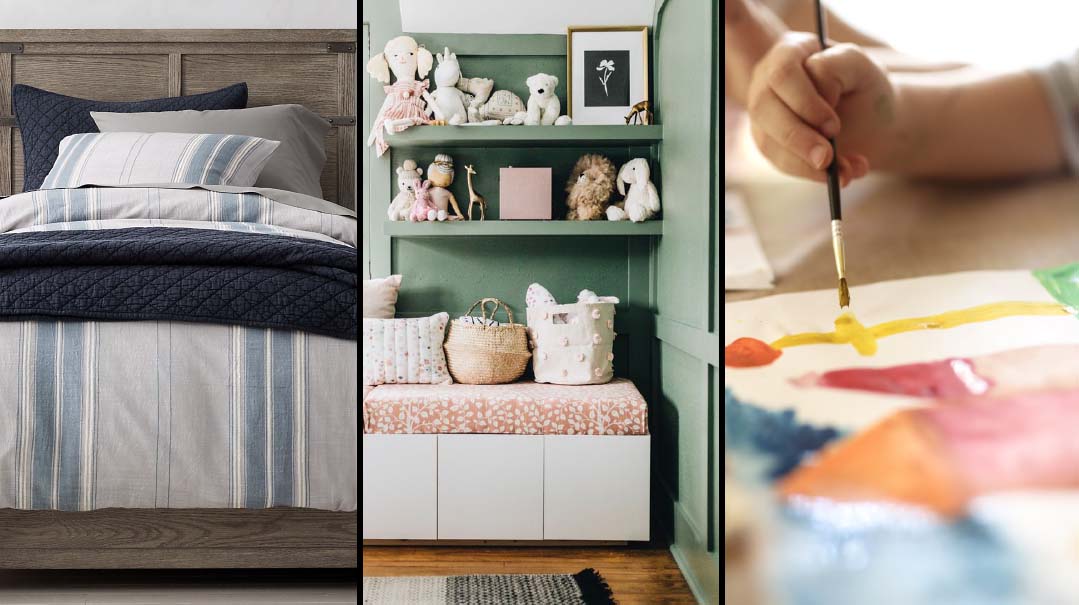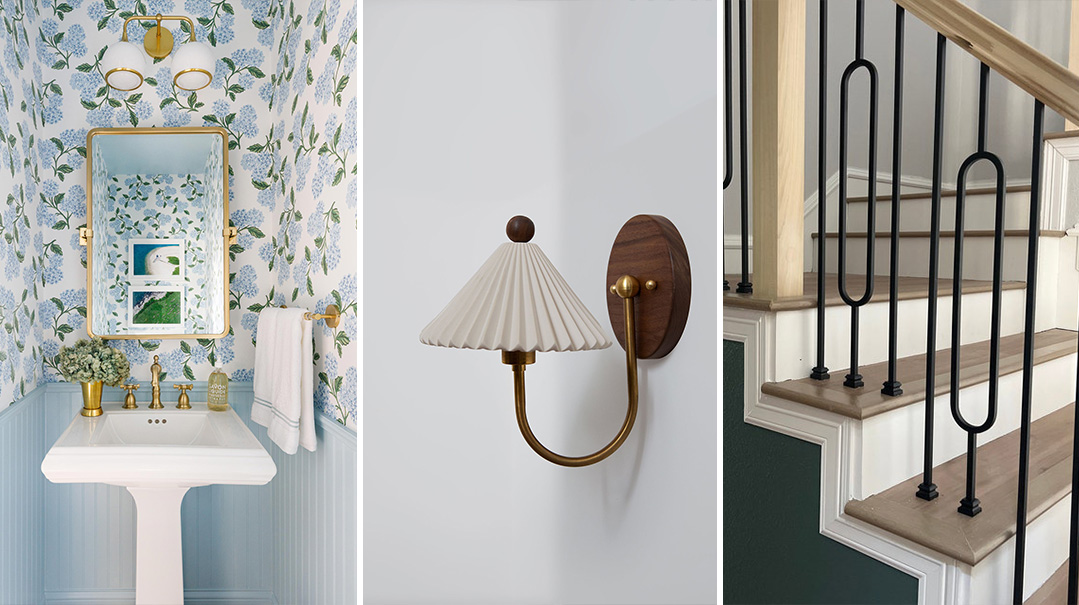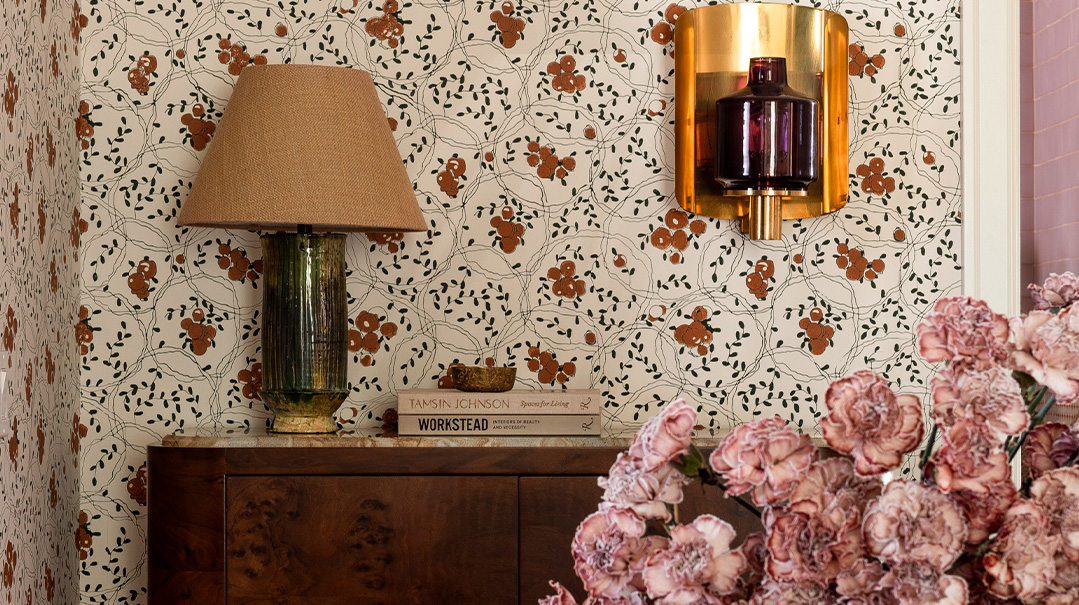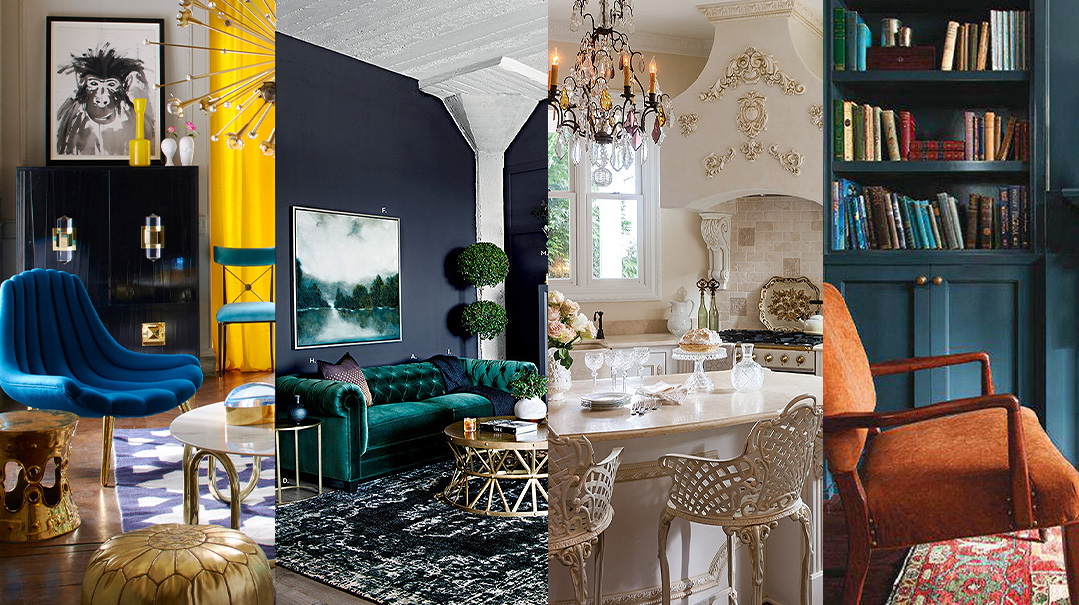A Child’s Room After All
| October 26, 2021
It can be so exciting to decorate or renovate your child’s bedroom. The bedroom is a place to relax and unwind, but it can also serve as so much more than that. Before you jump in, consider the ideas below to enhance the experience and create a room that will truly allow your child to grow and develop in the ways that are best for them.
Color Me Bright, Color Me Light
Color is usually the first thing that comes to mind when decorating a bedroom. It’s the first thing a person sees when they wake up and the last thing they see before falling asleep, so we want to optimize its impact. Research has shown that colors influence our moods, and color psychology studies the effects of colors on feelings, emotions, temperament, and even decision making.
It’s important for a child’s development to have some level of visual stimulation in their bedroom. The color you choose for a child’s bedroom can even influence his or her behavior and academic success. Keep these ideas in mind as you decide on your color scheme:
›Warm tones such as red, yellow, and orange often invoke fear, anger, or a sense of danger. On the flip side, these colors can also promote excitement, confidence, creativity, and warmth. Bright and primary colors have been shown to keep a child’s attention and even enhance memory. You can accessorize a young child’s room with bright letter blocks and boards to implement this.
›Cool colors such as blue, green, and purple are often found in nature and can engender feelings of tranquility, connectedness, and even confidence. These colors can have a calming effect.
›Some studies show that the best colors to use in children’s bedrooms are soothing tones like light blues, pinks, greens, and yellows. Avoid going too light because a white, undecorated room can promote anxiousness and unease.
Place It Properly
The next thing to consider is layout. Educational pioneer Friedrich Fröbel, the German creator of kindergarten, emphasized the importance of how a child’s space is organized. While spaces that are too open can leave a child feeling unsettled and tense, smaller spaces can invite a cozy and safe feeling. You want a bedroom to feel warm and inviting without too much stuff. Keeping clutter to a minimum can help a child stay calm and organized, and help maintain a successful play, work, and sleep environment.
Try to create a cozy effect with layers like decorative pillows and lamps. You can even designate a corner for a reading or a play nook, because we all know that there’s something about tiny spaces that kids love. Use coordinating bins and baskets to store toys and other visually unappealing items. Open shelving is a great way to display important awards, special items, and books, while still providing an airy feel.
Collaborative Process
It’s always a good idea to get your child’s input while decorating their room. Besides (hopefully!) ensuring that they’ll be happy with the end result, you’ll gain a number of benefits:
› It shows them that you value their opinion and grants them ownership of the space. Giving a child a choice gives them a voice.
› You’ll help them cultivate important life skills like decision making, cooperation, and problem solving.
› The feeling of accomplishment they’ll feel when the project is complete is huge, as is the quality bonding time with you, always a bonus in our fast-paced lives.
Another easy way to make your child feel like a superstar is to have them create a special work of art for their room. This can be a painting, a drawing, a collage, or anything else that you feel will fit. (If you want to guarantee the room has a certain look, narrow the options down yourself, then provide two or three acceptable choices.)
Learning Life Lessons
Not every child has a decorative eye; some are less interested or concerned with details of room decor and renovations. Yet our children are always watching and absorbing our actions. It’s important to keep this in mind when dealing with the inevitable mishap or stressor.
Decorating is a good time to model patience, gratitude, and forgiveness. Take the time to discuss these ideas with your children as the issues arise. You can even write down a particularly meaningful lesson and tuck it away among their things. Your kids will come across the paper one day and remember what they learned from you.
The Power of a Fresh Start
Research indicates that people tend to implement new habits and routines around certain times. Birthdays, new years, new months, and even the beginning of a new week are the most common catapults for change. This concept, known as a temporal landmark, can be applied to a newly decorated space as well. Let the new room be an inspiration to cultivate changes or habits that your child needs to develop. Use the power of the child’s excitement to work together and create a successful plan for the future.
Cirri Shafran is a licensed creative arts therapist and integrative health coach. She is passionate about helping people rise above their personal limitations, both in emotional and nutritional wellness. She loves being immersed in the creative process and is a collage artist and avid home cook. Visit her website www.candreflect.com to learn more. She can be reached at candreflect@gmail.com.
(Originally featured in Family Room, Issue 21)
Oops! We could not locate your form.







